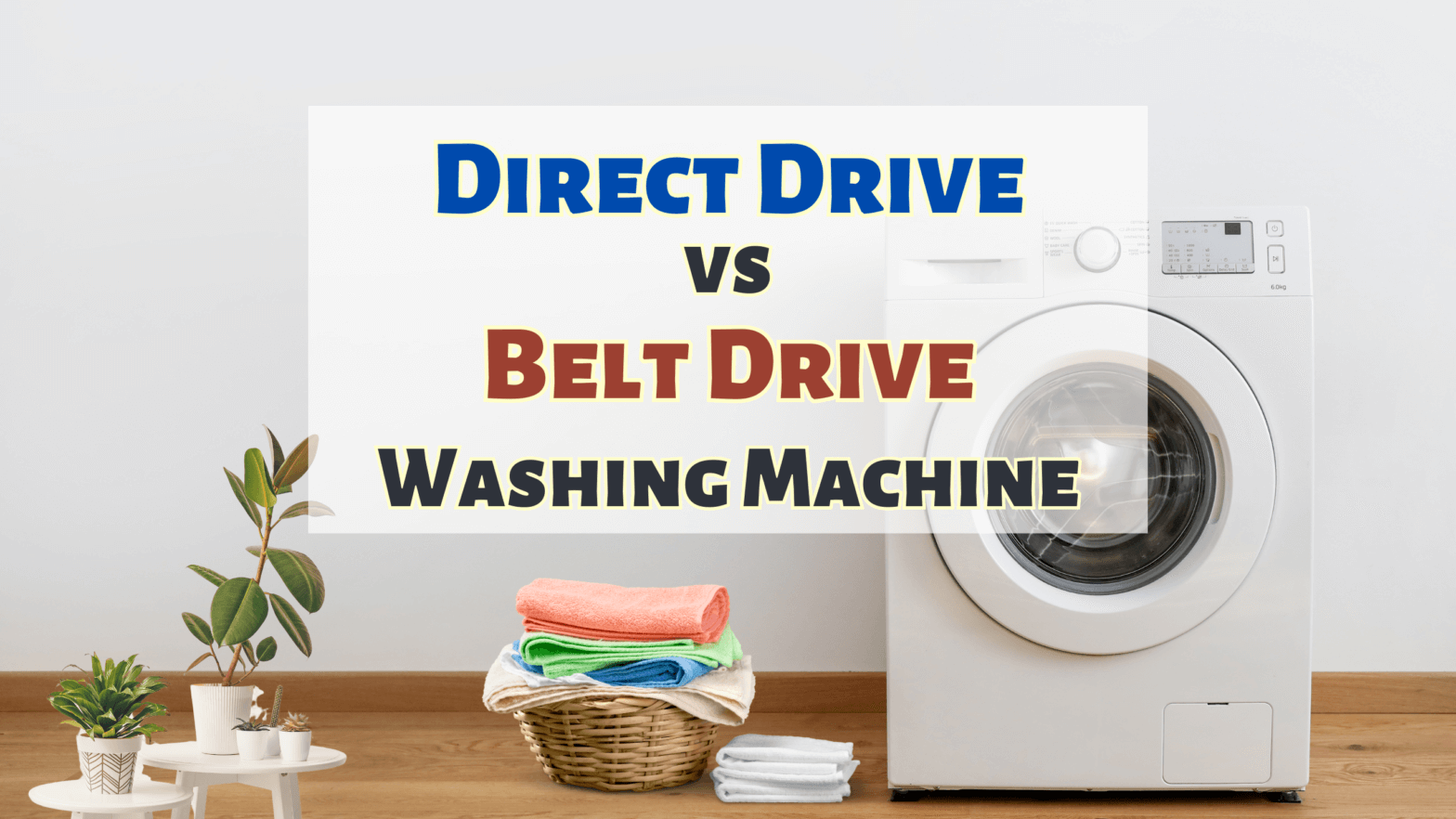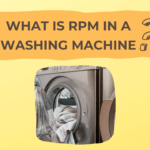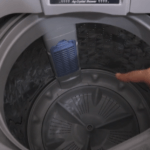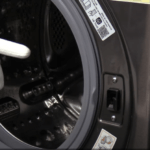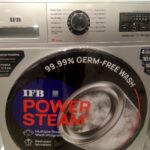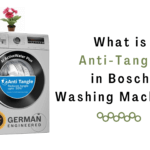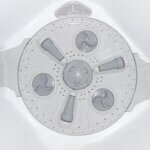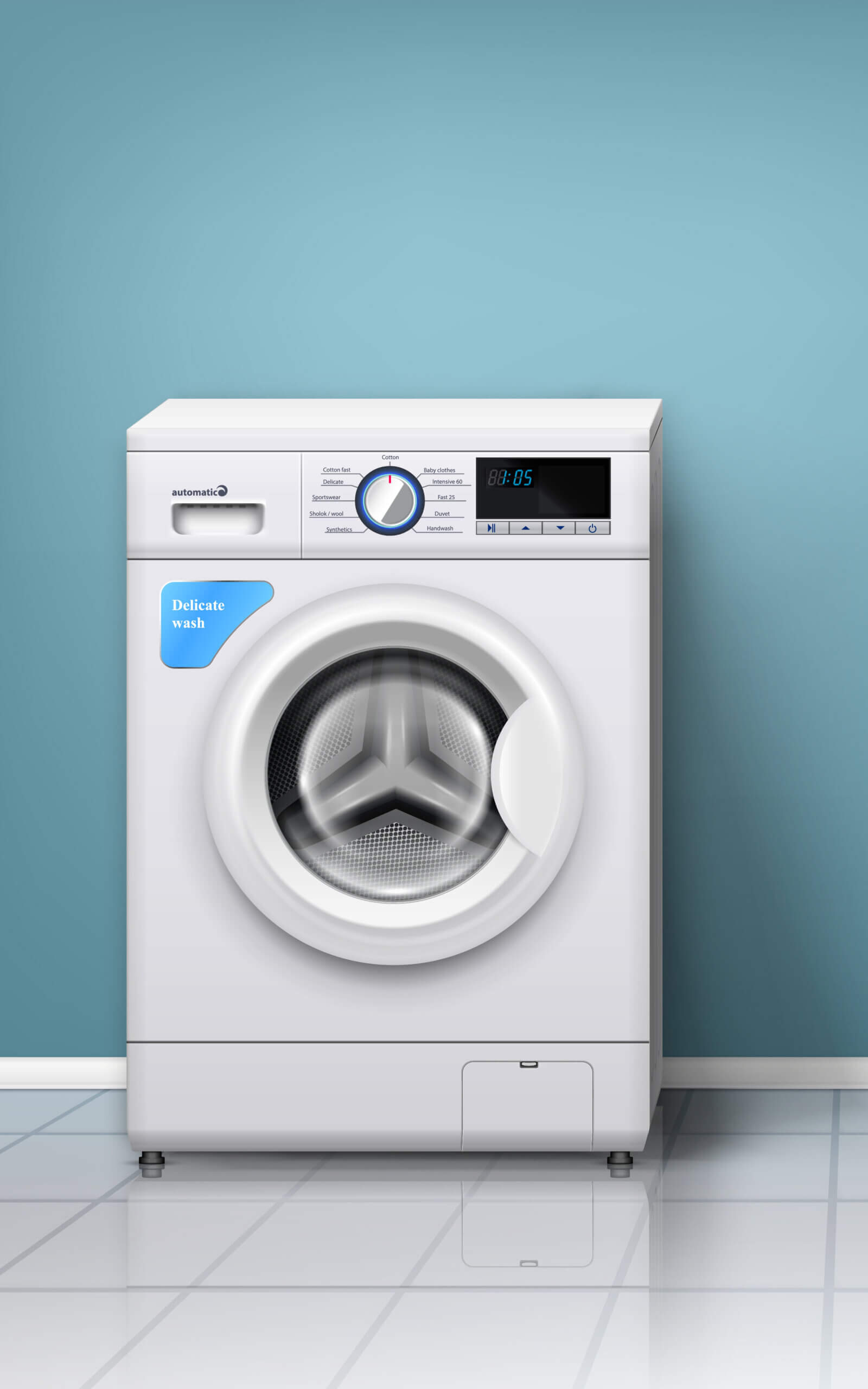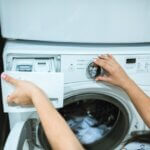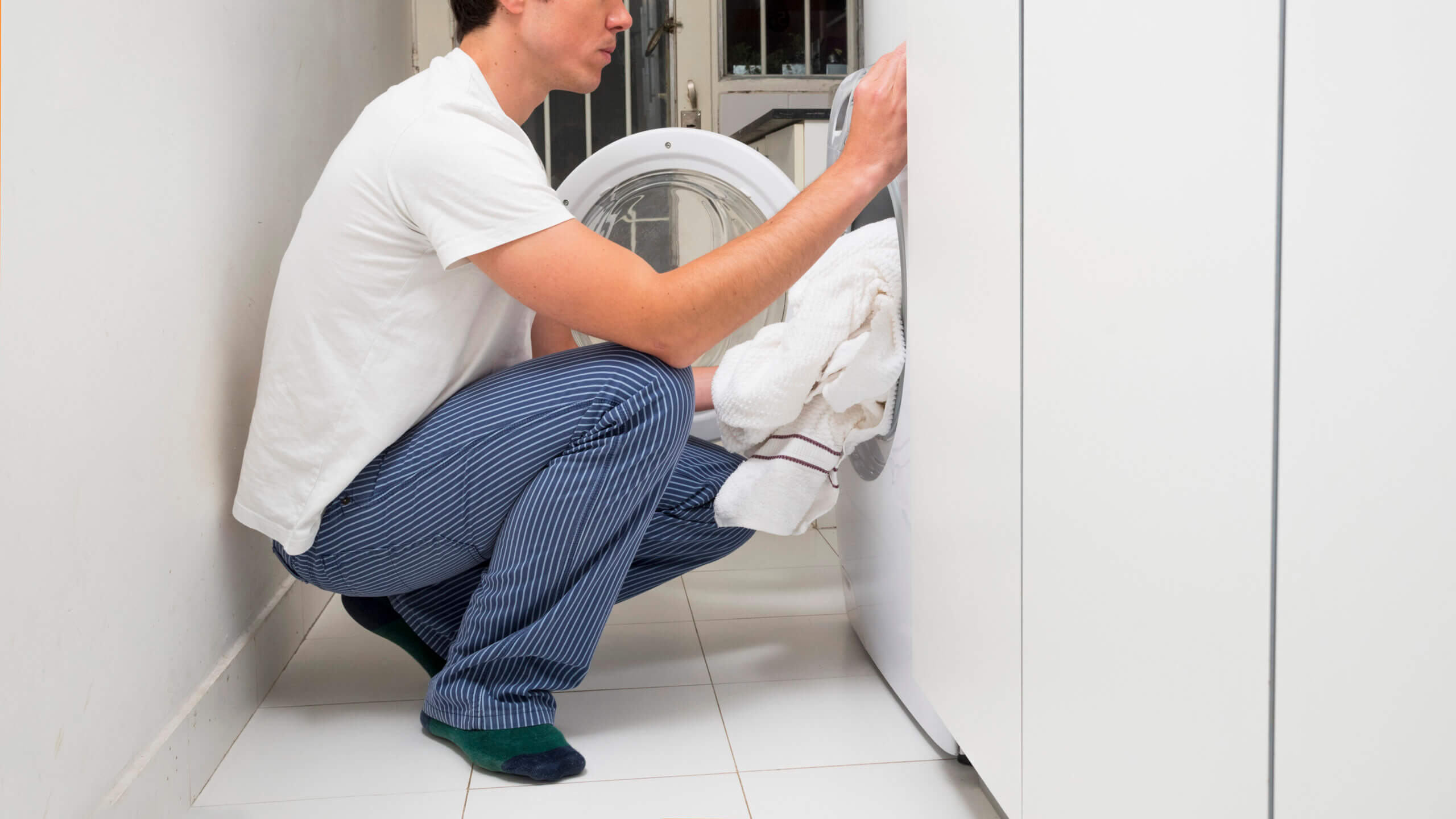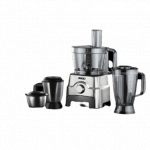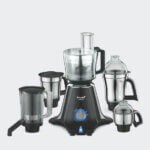Direct Drive vs Belt Drive Washing Machine: Which Is Right for You?
When it comes to choosing a washing machine, many factors come into play.
Among the numerous options available on the market, two main technologies stand out: direct drive and belt drive.
Both systems have their own set of advantages and drawbacks, and understanding the differences between them can help you make an informed decision based on your specific needs and preferences.
- Introduction
- What is Direct Drive Washing Machine?
- What is Belt Drive Washing Machine?
- Difference Between Direct Drive and Belt Drive Washing Machine
- Durability and Maintenance
- Environmental Impact
- Which Washing Machine Is Better Direct Drive or Belt Drive?
- Inverter vs Direct Drive Washing Machine
- At a Glance – Inverter vs Direct Drive Washing Machine
- Choosing the Right Washing Machine for Your Needs
- Conclusion
- More Resources to Help You
Introduction
Washing machines are an essential household appliance, simplifying the task of laundry for millions of people worldwide.
With technological advancements, manufacturers have developed two primary types of washing machines: direct drive and belt drive.
The primary difference lies in how the motor transfers power to the drum.
In a direct drive washing machine, the motor is directly connected to the drum, eliminating the need for belts or pulleys.
On the other hand, belt drive washing machines use a belt to connect the motor to the drum.
Each design has its own set of advantages and disadvantages, and in this blog post, we will explore and compare the two technologies to help you make the best choice for your laundry needs.
What is Direct Drive Washing Machine?

Direct drive washing machines utilize an innovative design where the motor is directly connected to the drum, eliminating the need for belts or pulleys.
This direct connection offers several significant advantages.
Advantages of Direct Drive Washing Machine
Increased Efficiency and Performance
Direct drive technology allows for better power transmission, resulting in enhanced efficiency and performance.
The absence of belts and pulleys reduces energy loss, ensuring that more power is directed toward washing and spinning clothes.
Reduced Noise and Vibration
Direct drive washing machines are notably quieter and produce fewer vibrations compared to their belt drive counterparts.
The direct connection between the motor and drum minimizes mechanical noise, making laundry time more peaceful and less intrusive.
Enhanced Durability and Fewer Moving Parts
Since direct drive washing machines have fewer moving parts, they are less prone to wear and tear.
The reduction in components also leads to increased reliability and longevity, reducing the likelihood of breakdowns and the need for costly repairs.
Potential Drawbacks of Direct Drive Washing Machine
Higher Upfront Cost
One of the main drawbacks of direct drive washing machines is their initial cost, which tends to be higher than belt drive models.
However, it is essential to consider the long-term benefits and savings in terms of reduced maintenance and energy efficiency.
Limited Availability of Models and Brands
While direct drive technology is gaining popularity, it may still be relatively less common than belt drive washing machines.
This limited availability might mean a narrower range of models and brands to choose from.
What is Belt Drive Washing Machine?

Belt drive washing machines, also known as traditional washing machines, have been around for a more extended period.
They use a belt and pulley system to connect the motor to the drum.
Advantages of Belt Drive Washing Machine
Lower Initial Cost
One of the most significant advantages of belt drive washing machines is their affordability.
The belt and pulley system is a simpler design, making these machines more budget-friendly, which can be especially appealing for those on a tight budget.
Widespread Availability and Variety of Models
Belt drive washing machines have been the industry standard for years, leading to a wide range of models and brands available in the market.
This abundance of choices allows consumers to select a machine that perfectly suits their needs and preferences.
Easier Maintenance and Repair Options
If a belt in a belt drive washing machine gets worn out or damaged, it can be easily replaced by a technician.
The simplicity of the belt system generally makes maintenance and repairs more straightforward and potentially less expensive.
Potential Drawbacks of Belt Drive Washing Machine
Higher Maintenance Requirements
Unlike direct drive washing machines, belt drive models have more moving parts, including belts and pulleys.
These components can wear out over time, requiring periodic maintenance and potential replacement, which could lead to additional costs.
Increased Noise and Vibration During Operation
The belt and pulley system in belt drive washing machines can generate more noise and vibration during operation compared to the direct drive counterparts.
This can be a concern for households with infants, light sleepers, or in apartments with thin walls.
Reduced Long-Term Durability
The presence of more moving parts in belt drive machines can lead to increased wear and tear, potentially affecting their longevity and reliability compared to direct drive washing machines.
✅Take a look at the Bestselling Washing Machines
WHAT’S YOUR CHOICE?
Difference Between Direct Drive and Belt Drive Washing Machine
When considering a washing machine, performance and efficiency are essential factors to evaluate.
Cleaning Performance of Direct Drive vs. Belt Drive Machines
Both direct drive and belt drive washing machines are capable of delivering excellent cleaning performance.
However, due to the more efficient power transfer in direct drive models, they may have a slight edge in removing tough stains and ensuring a thorough cleaning.
Water and Energy Efficiency Comparison
Direct drive washing machines tend to be more water and energy-efficient due to their reduced energy loss and improved power transmission.
These machines use the right amount of water and power required for each load, contributing to long-term savings on utility bills and being more environmentally friendly.
Belt drive washing machines can still be relatively efficient, especially if you opt for an efficient model.
However, on average, direct drive machines are more likely to excel in this category.
Noise and Vibration Levels During Operation
As mentioned earlier, direct drive washing machines are quieter and produce fewer vibrations compared to belt drive models.
If you live in a small apartment or have a laundry area near bedrooms or living spaces, the reduced noise and vibration of direct drive machines can be a significant advantage.
Durability and Maintenance
Durability and maintenance play a crucial role in the longevity and cost-effectiveness of washing machines.
Longevity and Reliability of Direct Drive Washing Machines
Direct drive washing machines are known for their long lifespan and high reliability.
The simplified design with fewer moving parts means fewer components can malfunction or wear out over time.
As a result, direct drive machines often require fewer repairs and have a longer overall lifespan.
Lifespan and Maintenance Considerations for Belt Drive Machines
While belt drive washing machines can still last for several years with proper care, they, at times, may require more frequent maintenance.
Belts and pulleys may need replacement after extended use, which could lead to additional costs.
Regular maintenance, such as cleaning lint traps and checking for any issues with the belt, is crucial to ensure the optimal performance of a belt drive washing machine.
Cost Implications of Repairs and Replacements
As mentioned earlier, direct drive washing machines generally have lower maintenance costs due to their simpler design and fewer moving parts.
On the other hand, belt drive machines may require more frequent repairs and potentially costlier replacements of belts and pulleys over time.
Considering these cost implications can be vital when deciding between the two types of washing machines, as it can significantly impact your long-term budget.
Environmental Impact
With growing concerns about environmental sustainability, it’s essential to consider the environmental impact of your household appliances.
Energy Consumption and Environmental Implications of Direct Drive Technology
Due to their enhanced efficiency and reduced energy loss, direct drive washing machines have a lower environmental impact.
By using less water and electricity, these machines help reduce your carbon footprint, contributing to a greener planet.
Sustainable Practices and Eco-Friendly Options
Regardless of the type of washing machine you choose, there are ways to minimize your laundry’s environmental impact.
Washing clothes in cold water, using eco-friendly detergents, and avoiding overloading the machine are simple yet effective ways to adopt more sustainable laundry practices.
Which Washing Machine Is Better Direct Drive or Belt Drive?
| Direct Drive Vs Belt Washing Machine | Direct Drive | Belt Drive |
|---|---|---|
| Efficiency | More efficient | Less efficient |
| Noise | Quieter | Noisier |
| Vibration | Less vibration | More vibration |
| Lifespan | Longer lifespan | Shorter lifespan |
| Cost | More expensive | Less expensive |
| Durability | Less durable | More durable |
| Environment-friendly | More friendly | Less friendly |
Inverter vs Direct Drive Washing Machine
The primary difference between inverter and direct drive washing machines lies in the way they generate and regulate the power used to drive the drum and agitate your laundry. Here are the key distinctions:
1. Motor Type:
- Inverter Washing Machine: Inverter washing machines use a motor with variable frequency drive (VFD) technology. This means the motor’s speed can be adjusted continuously, allowing for a flexible and energy-efficient operation.
- Direct Drive Washing Machine: Direct drive washing machines, as the name suggests, have a motor directly connected to the drum, without the use of belts or pulleys. This direct connection provides a more straightforward mechanical setup.
2. Energy Efficiency:
- Inverter Washing Machine: Inverter washing machines are renowned for their energy efficiency. The VFD technology enables the motor to operate at varying speeds based on the load and type of fabric being washed. This results in less energy consumption compared to conventional machines with fixed-speed motors.
- Direct Drive Washing Machine: While direct drive machines are generally more efficient than traditional belt-driven models, they may not be as energy-efficient as inverter models. The absence of variable speed control means the motor operates at a consistent speed, which can be less energy-efficient for smaller loads.
3. Noise and Vibration:
- Inverter Washing Machine: Inverters are designed to operate quietly. The ability to adjust motor speed smoothly and gradually reduces noise and vibration during the wash cycle, making them suitable for laundry rooms close to living spaces.
- Direct Drive Washing Machine: Direct drive machines can be slightly noisier due to the direct connection between the motor and drum. However, advancements in design and technology have made them quieter compared to older models.
4. Durability:
- Inverter Washing Machine: Inverter washing machines are designed with durability in mind. The gradual start and stop of the motor reduce wear and tear, contributing to a longer lifespan.
- Direct Drive Washing Machine: Direct drive washing machines are known for their robustness. The absence of belts and pulleys reduces the likelihood of mechanical failures, making them durable and reliable over time.
5. Washing Performance:
- Inverter Washing Machine: Inverter machines offer excellent washing performance. They come equipped with a wide range of wash programs and options, allowing for customization to match specific laundry needs.
- Direct Drive Washing Machine: Direct drive machines are prized for their powerful washing performance. The direct connection between the motor and drum allows for higher RPMs, resulting in more vigorous and efficient cleaning.
6. Price:
- Inverter Washing Machine: In general, inverter washing machines tend to be slightly more expensive upfront due to their advanced technology and energy-saving features.
- Direct Drive Washing Machine: Direct drive washing machines are often more budget-friendly, making them an attractive option for those seeking a lower initial cost.
In conclusion, the choice between an inverter and a direct drive washing machine depends on your priorities, including energy efficiency, noise level, washing power, durability, and budget constraints. Understanding these differences will help you make an informed decision that aligns with your specific laundry needs and preferences.
At a Glance – Inverter vs Direct Drive Washing Machine
This table provides a quick reference for comparing the two types of washing machines based on important factors. Keep in mind that your choice should align with your specific needs and preferences for a washing machine.
| Inverter vs Direct Drive Washing Machine | Inverter Washing Machine | Direct Drive Washing Machine |
|---|---|---|
| Motor Type | Variable Frequency Drive (VFD) | Directly connected motor |
| Energy Efficiency | Highly efficient with variable speed | Efficient, but no speed variability |
| Noise and Vibration | Quieter operation due to gradual speed changes | Can be slightly noisier |
| Durability | Durable with reduced wear and tear | Robust with fewer mechanical components |
| Washing Performance | Excellent with customizable options | Powerful and efficient cleaning |
| Price | Typically higher upfront cost | Often more budget-friendly |
Choosing the Right Washing Machine for Your Needs

When deciding between a direct drive and belt drive washing machine, it’s crucial to consider your individual laundry needs and usage patterns.
Assessing Your Laundry Needs and Usage Patterns
Think about the size of your household, the frequency of laundry loads, and the types of fabrics you frequently wash.
Families with large loads and regular laundry requirements may benefit from the efficiency and durability of direct drive machines.
Considering Budget Constraints and Long-Term Savings
If budget is a significant concern and you are looking for a more affordable upfront cost, a belt drive washing machine may be a suitable option.
However, keep in mind that direct drive machines can offer long-term savings through reduced energy consumption and maintenance costs.
WHAT’S YOUR CHOICE?
More Resources to Help You
For more expert advice and in-depth recommendations on the best washing machines in the market, check out our other informative blog posts:
6 Best Front Load Washing Machines Under 30000: A buyer’s guide
Best Front Load Washing Machine in India 2023
Best Impeller Top Load Washer in India 2023
Difference Between Semi Automatic and Fully Automatic Washing Machines
Best Semi Automatic Washing Machine in India
How Much Water does Front Load Washing Machine Use?
Front Load Washing Machine Buying Guide – India – 2023
Which Washing Machine is better – Semi or Fully Automatic (2023)?
How to Select Washing Machine Capacity in 2023?
Pros and Cons of Top Load and Front Load Washing Machines India 2023
Conclusion
In conclusion, both direct drive and belt drive washing machines have their own set of advantages and drawbacks.
Direct drive machines offer improved efficiency, reduced noise, and enhanced durability, albeit at a higher initial cost.
On the other hand, belt drive machines are more affordable upfront but may require more frequent maintenance and have higher long-term costs.
Ultimately, the decision between the two types of washing machines comes down to your individual needs, budget constraints, and preferences.
So, Direct Drive vs Belt Drive Washing Machine: Which Is Right for You? Assess your laundry habits, consider the environmental impact, and weigh the long-term savings to make an informed choice that best suits your household and lifestyle.
Happy laundering!
About Author
You can ‘meet your author’ on the About Author page here.
TRENDING NOW
- What Is RPM in a Washing Machine?
- Why Front Load Washing Machines Are Expensive?
- How to Clean a Top Loader Washing Machine?
- How to Clean an LG Front Loading Washing Machine?
- What is Front Load Washing Machine?
- What is Anti-Tangle in Bosch Washing Machine?
- Do Impeller Washers Tangle Clothes?
- What Is Pulsator in Washing Machine?
- What is Cradle Wash in IFB Washing Machine?
- How To Load a Front Load Washing Machine?
- Best Semi Automatic Washing Machine in India
- Best Front Load Washing Machine in India 2023
- Best Impeller Top Load Washer in India 2023
- How Much Water does Front Load Washing Machine Use?
- How to use Front Load Washing Machine? India 2023
- Front Load Washing Machine Buying Guide – India – 2023
- Which Washing Machine is better – Semi or Fully Automatic in 2025?
- How to Select Washing Machine Capacity in 2023?
- Pros and Cons of Top Load and Front Load Washing Machines India 2023
- Difference between Top Load and Front Load – India (2023)?
- What is an Inverter Refrigerator?
- Morphy Richards DLX 1000 Review
- Inalsa Easy Prep Food Processor Review
- Is A Food Processor The Same As A Blender?
- Blender vs Mixer Grinder
- Crompton Mixer Grinder 750w Review
- Where is the Freezer in Side by Side Refrigerator?
- Best Convertible Side By Side Refrigerator
- Best Side By Side Refrigerator Under 60000
- Midea Side By Side Refrigerator Review
- Difference Between 4 Star and 5 Star Refrigerator
- Difference Between Direct Cool And Frost Free
- What is Star Rating in Refrigerator? Know Everything!
- How To Use Preethi Zodiac Mixer Grinder?
- What is the difference between Single Door and Double Door Refrigerator?
- Advantages and Disadvantages of Double Door Refrigerator
- Advantages and Disadvantages of Single Door Refrigerator
- Mixer Grinder Wattage for Home Use & Buying Guide- India 2023
- Best Noiseless Mixer Grinders in India – 2023
